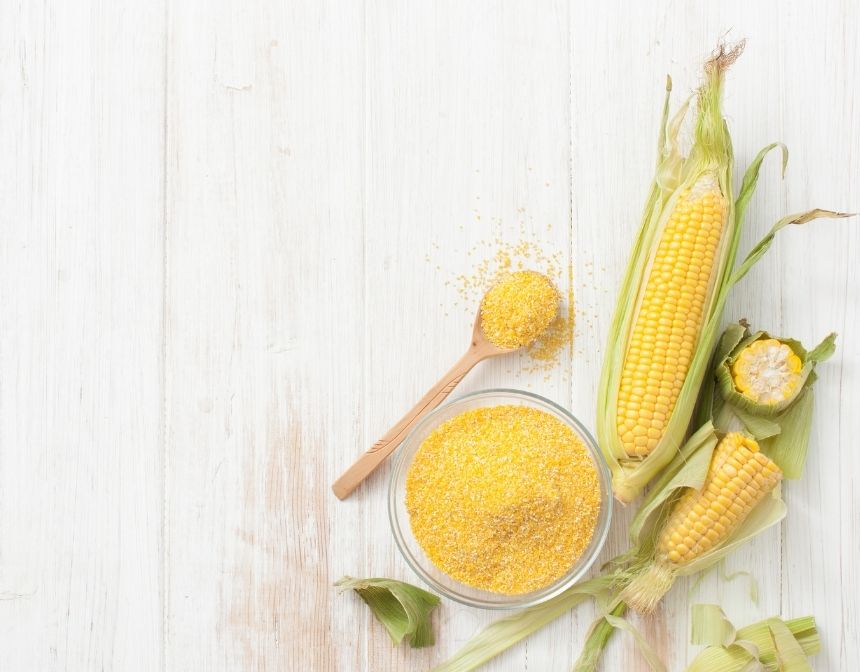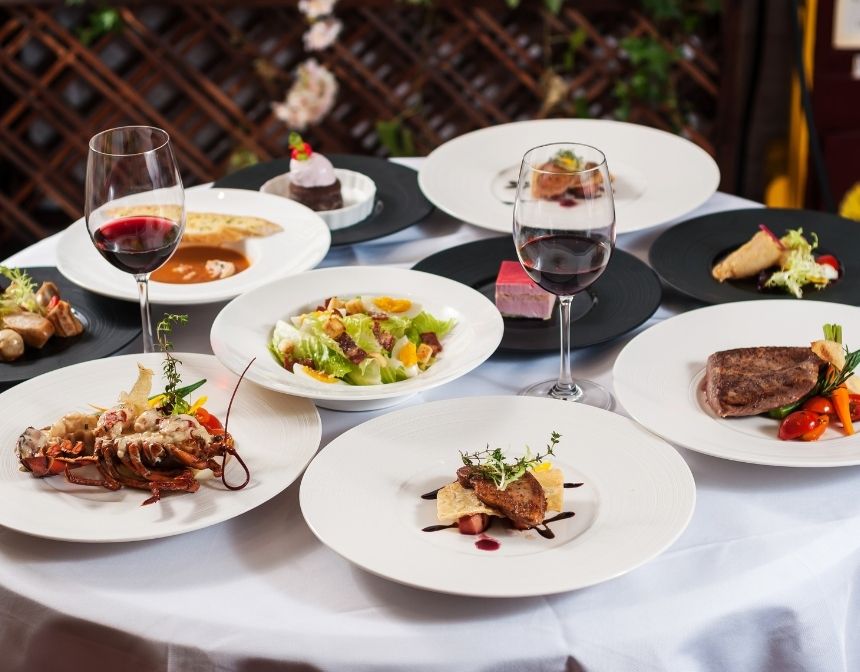What Is Polenta & How To Use It?
Polenta is an Italian staple as important as pasta and risotto. Still, few people know how to cook it! Learn all about polenta here; making it is easy!
Polenta is boiled cornmeal, but it’s much more than that. It’s an Italian staple, mostly enjoyed in the north, where comforting food is the norm. Polenta, though easy to cook, is more versatile than you think. You can really make it a whole meal if you know what you’re doing. Here’s what you need to know about polenta.
What Is Polenta?
Polenta is basically cornmeal, coarse corn that’s boiled to tender perfection. And although yellow maize is the grain of choice, you can also find polenta made of buckwheat, white maize or a mixture of them all.
Polenta can be coarse and grainy or smooth if finely ground grains are used. And although polenta was once a poor man’s meal, today it is a specialty in Northern Italy, Swiss and some Balkan countries like Romania.
So, what is polenta? Polenta is often served as a starchy side dish or main course, and just like mashed potatoes, you can amp it up with add ons, such as butter and meaty foods like bacon and sausages.
You can also drizzle tomato sauce over polenta or make it creamy with dairy. The sky’s the limit! And even when served plain, polenta is utterly satisfying and filling.
There are two main types of polenta, the traditional ‘raw’ polenta, which takes several hours of simmering, and the instant polenta, which is pre-cooked and only needs a few minutes of hydration. And although connoisseurs prefer the traditional kind, there’s nothing wrong with enjoying the instant variety.
Uses of Polenta
Polenta has many uses for breakfast, lunch and dinner. For starters, let’s just say that when polenta is cooked right, it’s a fantastic side dish for sausages, steak or roasted chicken; everything tastes awesome with it! Especially fatty foods.
Now, what do you think of this? If the polenta is dry enough, you can press it and shape it into sticks you can later fry them for a gluten-free alternative to French fries; how cool is that?
You can also use polenta to give body to a hearty and comfy casserole. Just combine it with spinach, mushrooms or your favorite veggies, cover it with cheese and bake it to a perfect golden tan.
Did you know you can make cakes with polenta? You can! And they’re crumbly, moist and beautifully compact. Try making a polenta cake with fresh cherries and see what you’ve been missing.
Fried, grilled, baked or just boiled to silken perfection, polenta is as versatile as all-purpose flour, but it’s better — it is richer, bolder and more colorful! Recipes for polenta abound, both classic and innovative — try some of these recipes and make polenta part of your life.
Benefits of Polenta
So, why would you want to use polenta? One because it’s delicious. Two, because it’s quite healthy.
For starters, polenta is made of corn, so it’s gluten-free. Just make sure you get 100% corn polenta. Some producers might sneak some other flours. Polenta is a superb source of dietary fiber, and like other grains, it has some protein, too. Talking about a win-win.
And although polenta is not the most nutritious food on the planet, it is still part of a healthy Mediterranean diet, and it’s one of the best starches to add to your diet.
Here’s the thing, the carbohydrates in polenta are much more complex than what you would find in wheat flour. They won’t elevate your blood sugar levels immediately, as it takes a bit more time for your body to digest them.
There’s more good news. Polenta offers relatively few calories compared to regular baked goods like cakes and cookies, and that alone is reason enough to experiment with polenta and try to substitute some of the other carbs in your meals with it. Polenta is good for you; it’s versatile and tasty. What’s not to love!
Polenta Substitutes
Sometimes you don’t have polenta around, and it’s out of stock. That calls for a few polenta substitutes that, although not precisely the same, play the part.
Cornmeal is a good alternative for polenta, especially if you find a coarse variety. If cornmeal is too fine, it won’t give you the same texture. You can still mix it with butter and throw in a few mushrooms for a polenta lookalike.
Couscous is similar to polenta as well, and they share the same coarse texture. Keep in mind couscous is made with wheat, so it does have gluten. Flavor and texture-wise, it will work for most polenta recipes.
Semolina is kind of like couscous. It’s also made with coarse wheat grains (there’s fine semolina as well) and can be used as a good substitute for polenta. The main difference between semolina and couscous is that semolina is made with roughly milled grains and couscous is literally the entire grain crushed into a coarse powder.
Now, if what you need is a starchy side dish to substitute polenta, why not go for some potatoes or a velvety risotto? They’re not the same thing as polenta, but they serve the same purpose.
How To Make Polenta?
Although polenta can be part of complex recipes, the easiest way of cooking it is just boiling it.
You’ll need one cup of polenta, four cups of water, a teaspoon of salt, two tablespoons of butter and half a cup of parmesan cheese. Boil the water, add the polenta while the water bubbles. Cook until the polenta no longer sinks. Add the salt and cook for half an hour more. Drain the polenta, mix it with the butter and top it with parmesan cheese!
Is Polenta Gluten-Free?
Yes, polenta is gluten free as long as it’s made with pure corn. Only wheat, barley, rye and oat grass contain gluten; corn doesn’t.
Any other grain, seed, nut or legume doesn’t contain gluten. And although identifying gluten-free grains is easy, you can’t say the same about store-bought products; you never know if there’s gluten in there. Read the labels and stay safe!
Well, with high-quality polenta, you need not worry. That’s why the Alpine classic starchy dish is gaining recognition these days. It’s a fantastic gluten-free alternative! What else do you need? Always keep some polenta at home and enjoy its benefits.
Where Is Polenta in The Grocery Store?
The good news is that polenta is easy to find in every supermarket. You’ll find it with all the other flours.
There’s a chance you’ll also find it in the imported stuff, next to Italian pasta and other specialty treats. Whatever you do, make sure you buy plenty of it. Polenta will become your new favorite friend in the kitchen!
Johnny Cakes
Johnny cakes have been a staple in American cuisine since the Native Americans settled here. Over the years they have had a few names, but eventually evolved...
Corn Bread
Cornbread is a sweet-salty bread recipe that consists of basic ingredients such as cornmeal, flour, and butter. With different variations, this easy cornbread...
Damascus Dessert
Damascus dessert is one of the most delicious ones. It will offer you a different flavor that you cannot get enough of with its structure spreading in...





























